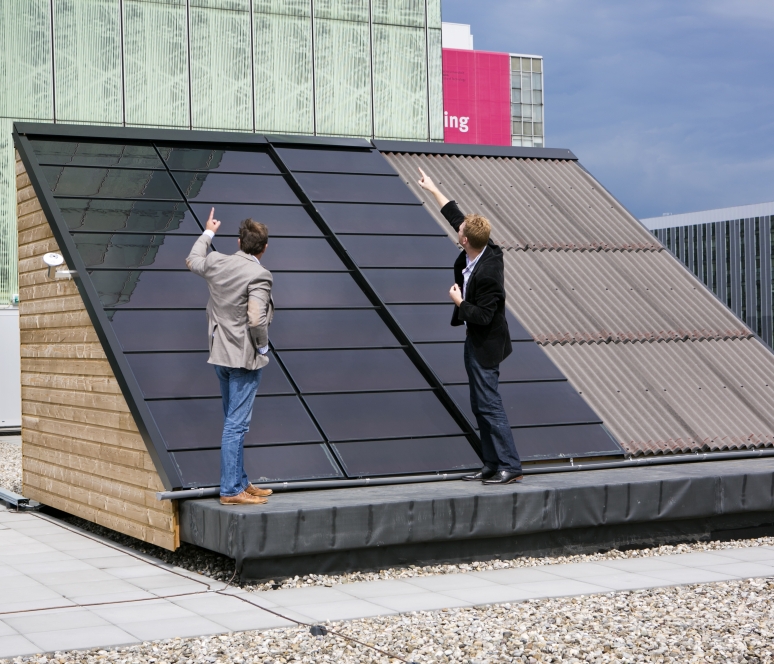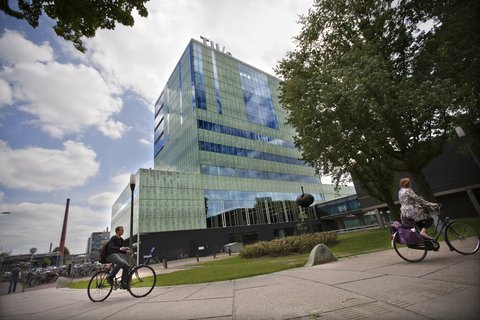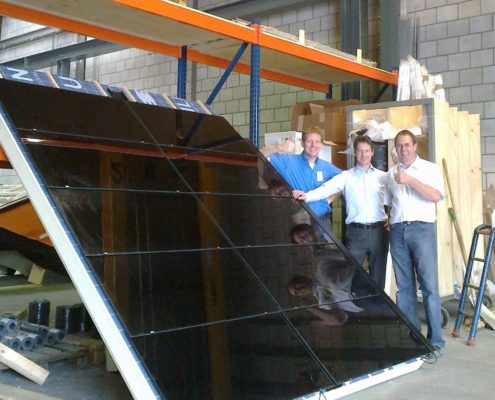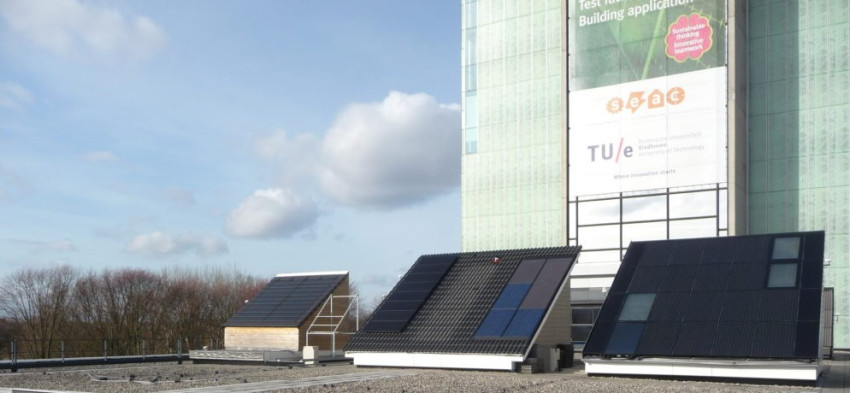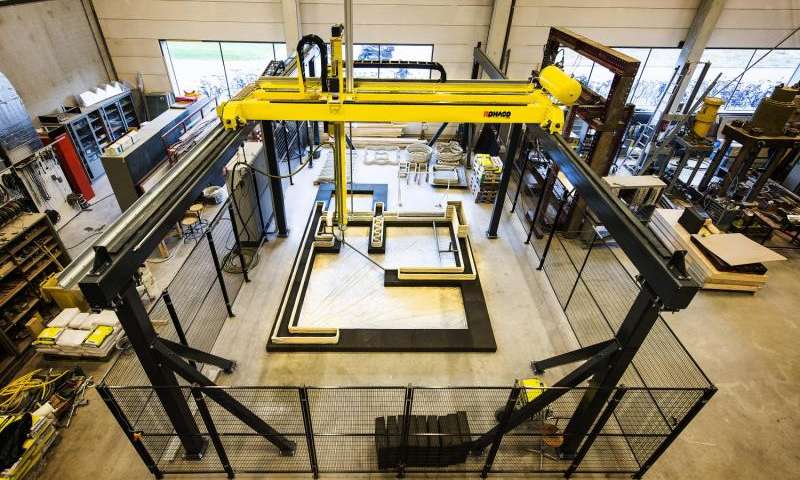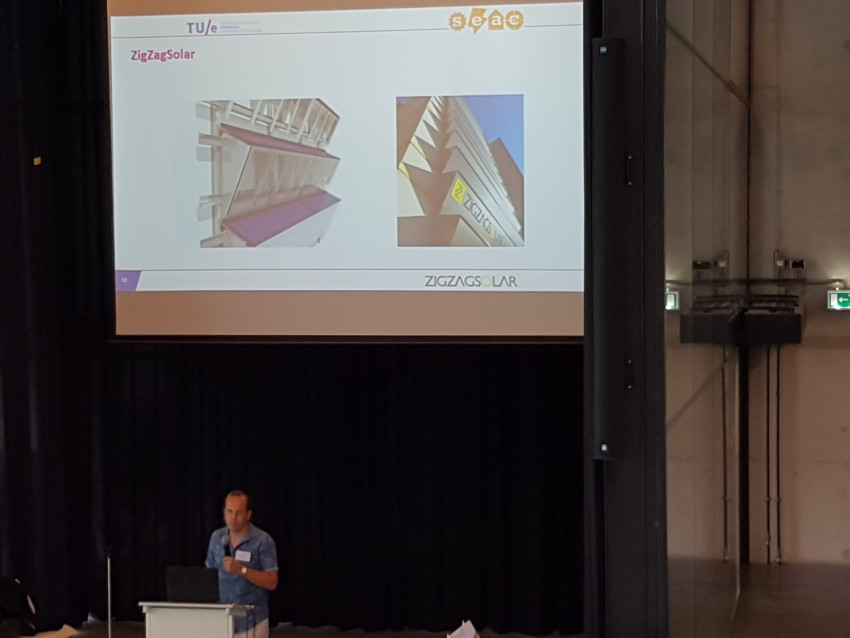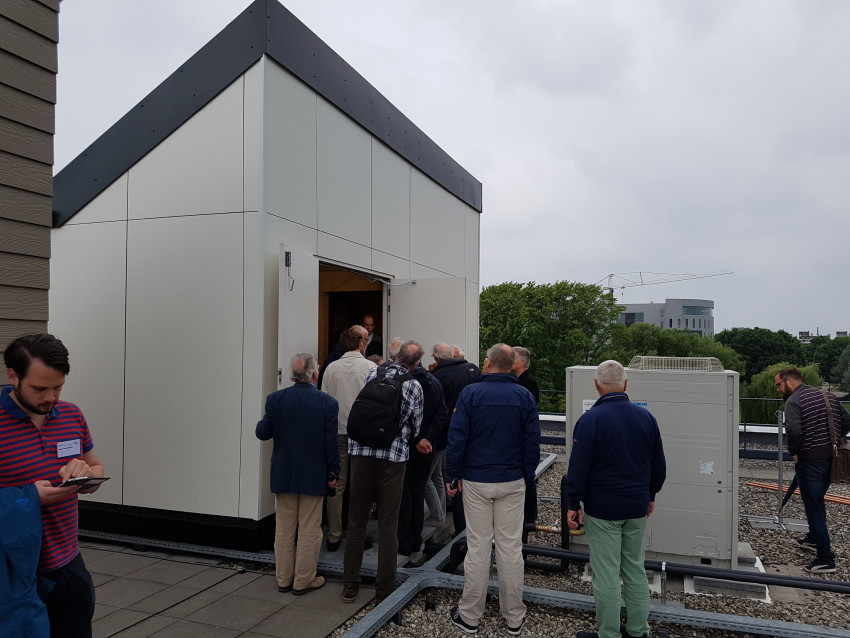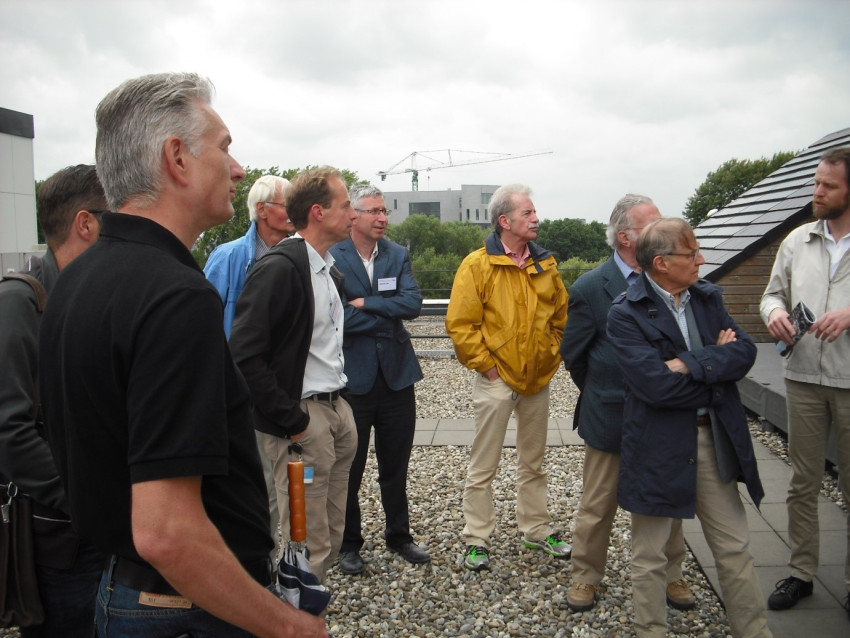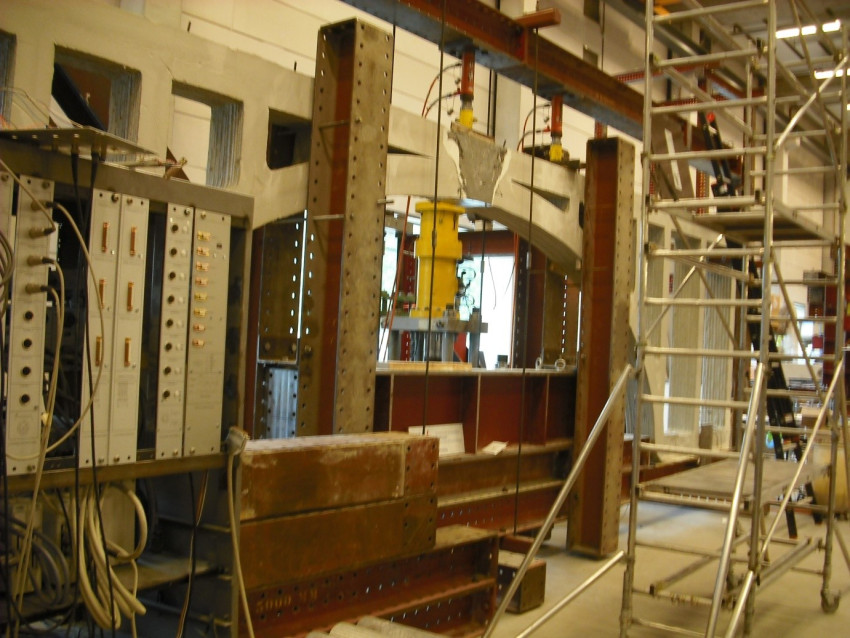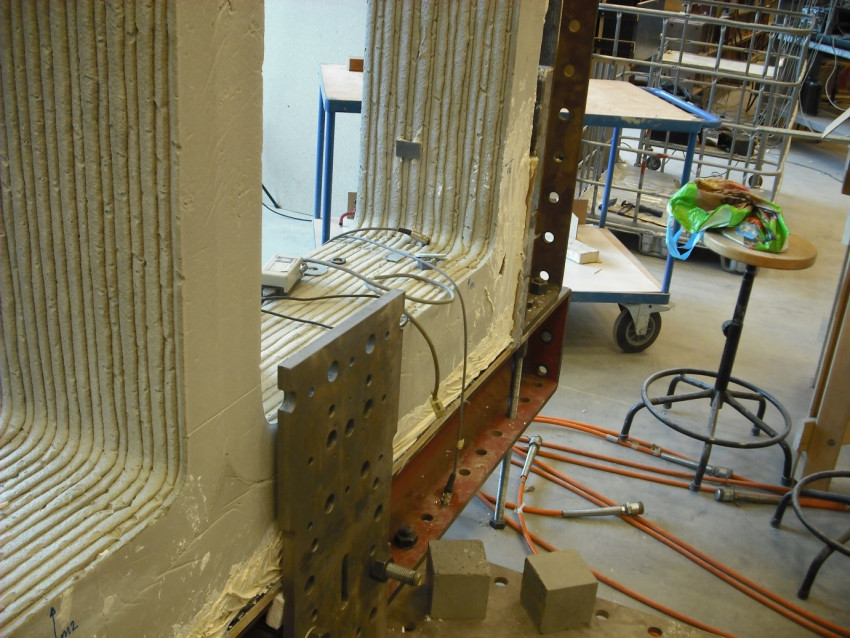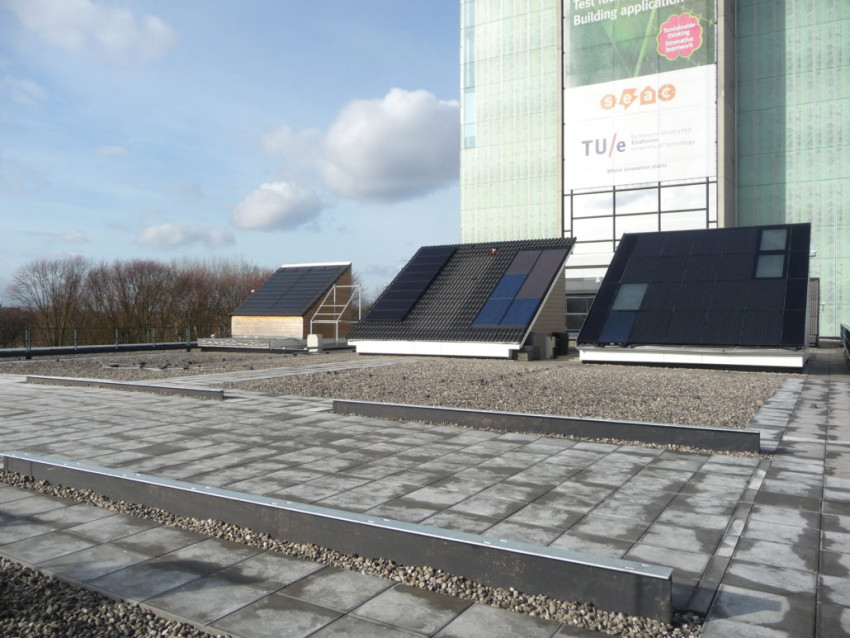
PV(T) to collect energy from buildings
Report on KIVI activity energy harvesting on buildings at SEAC SolarBeat
SAEC-SolarBeat
After a cup of coffee or tea we started right away with the presentation of Roland Valckenborg (SolarBeat and SEAC). He explain ed the benefits and boundary conditions of harvesting energy with PV or thermal collectors. In the energy transition a large contribution of PV and thermal is needed. A large area will have to be installed and innovation to integrate PV in buildings are needed. The role of SEAC is to help increasing the Technology Readiness Level (TRL) of PV and related products. The expectation is that the cost of PV electricity will decrease to 2 cents per kWh. A lot of area in The Netherlands is available as described in the Roadmap for PV systems and applications in The Netherlands. Most probably enough to cover the energy needs.
ed the benefits and boundary conditions of harvesting energy with PV or thermal collectors. In the energy transition a large contribution of PV and thermal is needed. A large area will have to be installed and innovation to integrate PV in buildings are needed. The role of SEAC is to help increasing the Technology Readiness Level (TRL) of PV and related products. The expectation is that the cost of PV electricity will decrease to 2 cents per kWh. A lot of area in The Netherlands is available as described in the Roadmap for PV systems and applications in The Netherlands. Most probably enough to cover the energy needs.
PV
To get enough PV power available all kinds of surface and areas should contribute. Examples were shown of tests concerning PV on noise barriers, landfill, bicycle roads as well as floating solar. Learning by doing is essential to innovate here!
BIPV
More and more PV will have to be an integral part of (new) buildings: Building Integrated PV (BIPV). A lot of interesting products are available already. The status of these product has been described by SEAC and partner SUPSI in a SUPSI SEAC report.
Renovation
Renovation is more challenging than new-built homes and buildings. But some examples are shown of solutions for homes and larger commercial buildings.
TUe-SolarBeat
The projects which go into depth in analyzing the options for PV and thermal products are carried out with the TU/e-partner. Roel Loonen (PhD student TUe Built Environment) shows some results obtained by experiments and related model and simulation work.
ZigZagSolar
One of the projects was with ZigZagSolar a company producing facades with PV in a kind of zigzag structure. About questions like how to optimize the shape and how to design the converter configuration.
NEN 5060
A second one is about the calculations of the expected output of PV. This work is aimed at updating the related NEN 5060 standard.
BICPV
The last project was on the use of Building Integrated Concentrator Photovoltaic (BICPV) in facades e.g. in an office building in Alblasserdam. All about optimizing the Lumiduct product of the Wellsun company.
SolarBeat
Out on the roof of Vertigo we got a very interesting tour of all the experiments running at SolarBeat and the way they are conducted.
Presentatations:
Omschrijving
PV(T) everywhere to maximize energy harvest in built environment:
Solar Energy
On our way to a CO2 free energy supply, renewable energy will play a key role. One of the important options is solar energy. Solar panels absorb light and generate electricity through the Photo Voltaic (PV) effect. Solar collectors absorb heat. Both can help us in providing energy! Some panels are even a combination of PV and solar thermal, called PVT
Building Integrated PV (BIPV)
To produce enough energy large areas of solar panels should be used. Not only on the roofs with the type of panels we use today. Many surfaces of the build environment should contribute, especially in a densely populated area as the Netherlands.
Performance test site SolarBEAT
This event will show the status of Building Integrated solar energy (BIPV) and the test site SolarBEAT of BIPV (and other) solar systems located on the Vertigo building of the TU/e. The experiments on the roof of the TU/e building are a joint project of SEAC (Solar Energy Application Center) and the TU/e.
Modeling
SolarBEAT is equipped with a weather station and dedicated network of sensors for irradiation, temperature, energy yield and many more. This enables a detailed analysis of the performance of the solar panels and special BIPV elements. These data are used to improve the panels and to provide input for performance models and techno-financial modeling.
Extra: 3D concrete printing demo
One of the interesting activities of the Department of the Built Environment is 3D printing of concrete structures. A huge 3D printer enables fabrication of large concrete parts with all kind of shapes. Together with BAM a bridge has been realized. Interleaved with the SolarBeat a demo will be shown.
Spreker(s)
Roel Loonen (PhD building performance group at TU/e, Eindhoven)
Roland Valckenborg (SEAC, SolarBEAT, Eindhoven)
Locatie
Vertigo building, TU/e campus Eindhoven
Den Dolech 2, 5612 AZ Eindhoven
Organisator
Elektrotechniek
TU/e en SEAC
Naam en contactgegevens voor informatie
ir. Steven Luitjens 06 46 72 66 89

